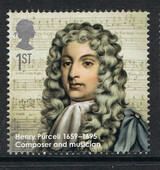 Henry Purcell's Dido and Aeneas has been my next research project. When I first heard the opera, I wasn't at all sure that I would enjoy it, but after all the work analysing it, I'm a real fan.
Henry Purcell was just an infant when Charles II was invited back to England, and in his mid-twenties when James II succeeded to the throne in 1685. He trained as a choir boy at the Chapel Royal, and went on to become a court composer, the organist at Westminster Abbey, and a renowned harpsichord player and teacher before his untimely death at the age of 36.
Dido and Aeneas was Purcell’s first opera and seems to have had little initial impact. After an early amateur performance at Josias Priest’s Board School for girls in 1689 (although it is unclear whether it was performed at Court previously), Dido and Aeneas remained unpublished until 1841.
The opera is in three acts. Act I opens with an Overture based on the French overture form of a slow start followed by a fugal second part. Lovely arias including “Shake the cloud from off your brow”, and “Ah Belinda, I am press’d with torment” are interspersed with choruses and “recitatives” (speech-like solo singing). The first act concludes with an uplifting chorus “To the hills and the vales” followed by an enchanting instrumental dance, “The triumphing dance”.
Behind Purcell’s beautiful music and Nahum Tate’s libretto setting of the Aeneid, lies a world of political uncertainty, constitutional upheaval and social critique. The opera is full of characters who give or receive bad advice, all of it ultimately shown to be ill-considered and misguided.
There is controversy around the dating of the work. Those who date it before the Glorious Revolution of 1688, suggest that Dido and Aeneas is a political allegory, critical of the breakdown of constitutional principles and the subsequent undermining of the divine right of kings. If dated at 1689, Dido and Aeneas can be viewed as a criticism of the new monarchs, Dutch William of Orange, and his wife Mary, the daughter of the deposed James II. It may even be a warning to William to treat Mary well. Either way, Dido’s death is unusual and foreboding in an opera of the period, and coincided with Purcell’s declining popularity in the new Court.
Musically, Dido and Aeneas demonstrates Purcell’s genius. He was skilled at “word painting”, using music to embody meaning, as for example the dissonance when Dido sings “Peace and I are strangers...”. Purcell did not create word painting, it was frequently used in Elizabethan and Baroque music, but he was a master at it. Similarly, he had a gift for English prosody, accurately recreating the rhythms of the English language in his music.
Purcell also showed extraordinary talent in the way he employed musical keys to underlie the drama. Most of the opera is in C minor, which represents pain and suffering. Happier scenes, such as the lovely “Fear no danger” duet and chorus are set in C major, the “royal” key. F major is Purcell’s love key and G minor is his death key, used as foreshadowing in “Ah Belinda” and then towards the end of Act III in “Dido’s Lament”.
Over two hundred years after Purcell composed Dido and Aeneas, a group of music students, including the young Ralph Vaughan Williams and Gustav Holst, were instrumental in reviving the opera for the 1895 bicentennial of Purcell’s death. Today, it is still frequently performed and recorded. Henry Purcell’s Dido and Aeneas may have been ‘just’ a small opera, but it continues to illuminate a watershed in English history and is cherished as early English music.
"Without music, life would be a mistake."
Friedrich Nietzsche
In December, I was privileged to to be the soloist in the Prelude movement of John Rutter’s Suite Antique, played by the Stevenson String Group. Three flute players each took one movement.
I confess to having more than a few qualms when I learned that my movement was the Prelude, especially about the middle high section. I must have practiced that fast motif at least a thousand times, quite a few of them unsuccessfully. In the end, an adjustment to my left wrist position and a lot more practice ensured it came off on the night.
While last year, I felt very nervous performing, I seem to have become more confident, especially when I feel prepared enough. In the December concert, while there was a moment of inattention and improvisation, I felt in control of my flute and the music, and that was a great feeling. It was also amazing to perform as a soloist, and to work closely with a conductor and accompanist! I may never get an opportunity like that again, but it was so wonderful to be standing up on the stage, playing, with an orchestra at my back!
 Last week, for my Performance Assessment, I played the Rutter with piano accompaniment followed by Pal Jardanyì’s Sonatina for flute in three movements.
Pal Jardanyì was born in Budapest in 1920. (My maternal grandparents were also Hungarian, but they left Budapest at the turn of the century, emigrating to the US.) Jardanyì was a pupil of Kodaly, an avowed anti-fascist who assisted and sheltered Jews during WWII, and a supporter of the 1956 Hungarian Uprising for which he was subsequently dismissed from his position at the Academy of Music in Budapest. He was interested in ethnomusicology, and in 1960 became Head of the Department at the Folk Music Research Group, Hungarian Academy of Sciences. He was only 46 when he died.
The Sonatina for flute was written in 1952 for the Hungarian flautist Zoltan Jeney. It’s a lovely, expressive work with several changes of mood packed into a short piece. Originally, I felt it might be too modern for me to relate to, but I have thoroughly enjoyed playing it. It’s been a kind of journey towards understanding the music, finding meaning and then expressing that meaning. In my mind, there are themes of the end of WWII, sadness, and regeneration. It amused me, therefore, to accidentally discover, only on the day of the performance, that the Sonatina is subtitled in Hungarian, “Hajdu” translated as “Hungarian Herding Songs”. I wonder whether knowing that would have changed my approach?
While overall I've been pleased with my performances, I know that I have a tendency to become sharp when playing loudly, and I need to learn how to project my sound more. That's what I'll be working on over the next few months.
I’m back at college again, but part-time this year... although the workload feels like full-time, and I don’t know how the others are managing. For me, the learning is an end itself. Having been a proponent of lifelong learning when I worked in adult learning in Perthshire, it’s thrilling to be a lifelong learner myself, and in theory, this should be enough. I’m too old to be looking towards full-time employment in music, but it amuses me that I’m not too old to still have aspirations and ambitions. I had planned to apply to do a BA in Music, but I’m so enjoying the opportunities at Edinburgh Colleges (Sitehill Campus, formerly Stevenson College), and being part-time gives me a better study / home balance at this stage in my life.
 I’m taking a break from playing traditional music in order to focus on improving my Boehm flute playing, and this has caused me to reflect and stress on what I want out of my music, and where I’m going. It seems to be a pattern - I work hard, just get to the point where I’m near the top of my game, and then I decide to start another instrument, or in this case, play a different genre. An old trad flute friend phoned this weekend, someone with whom I have played in sessions and met up with in workshops for over a decade. She’s now playing both Boehm and wooden flutes, as is another acquaintance. Perhaps, for traditional flute players, Boehm flute is the natural progression, being a more optimized instrument with more tone opportunities and a bigger range. Perhaps I really do have a low boredom threshold? Maybe it’s just that music is the journey and there always will be times when it feels right to move on... (one of the most exciting journeys I've ever had was walking on the Great Wall in China recently).
Or perhaps it’s as Peter Marino, the architect said recently: “...go around the middle: go above or below. People who are massively insecure want to be in the middle. It makes them feel safe. It doesn't make me feel safe. I can't breathe” (Peter Marino talks to Vanessa Friedman, Lunch with the FT, 29 September 2012). Right now, playing the Boehm flute feels like a new chance to breathe.
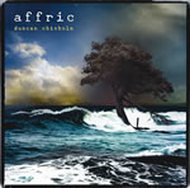 Duncan Chisholm’s concert at the Queen’s Hall last Friday, with the launch of his new cd Affric, is the culmination of a very personal journey of exploration through the ancient Chisholm Clan lands. He played selections from all three of the Strathglass cd trilogy (Farrar, Cannaich and Affric), bringing his unique mastery of beautiful tone, lyrical playing and driving rhythm. A couple of the trad concerts I’ve been to recently have been very “same old” or even past their sell-by date, but I could listen to Duncan Chisholm every week and still be mesmerized by the sheer beauty of his playing. He opens a window into his soul in his slow playing while in his fast playing, he move as easily onto the off-beats as the downbeat, and it gives the music lift and drive. There were times when I could would have liked to get up and dance, and there were times when I could have wept. A great evening to remember.
I’ve booked myself in for the ABRSM Flute 6 exam in November, very scary as I’ve never done an ABRSM practical exam before. I’m looking forward to attending a Syrinx Flutes workshop soon, organized by the SCO’s Lis Dooner, then a chamber music weekend in Birnam at the end of the month. I’m also very excited about playing part of John Rutter’s Suite Antique with the string group, so beautiful...bits bring Peter Warlock to mind. So much to do... so little time.
Last Thursday was my recital for the Degree Foundation Music course, never been from my mind since I started the course. Despite only taking up silver flute in November, I really wanted to play all three of my instruments in the performance, and was lucky to find a fantastic Boehm flute teacher in February to help me with technique. Having had such fun playing baroque music in the string group, the casual suggestion from my college tutor that I could play a Handel sonata (“grown up music”!) really captured my imagination. From March, not a day went by when I wasn’t playing Handel’s Sonata in F major - as well as hearing it in my mind in the middle of the night, on the bus... everywhere.
The Sonata in F major was one of eleven sonatas written by Handel in the mid-1720’s, often referred to as Opus 1 Number 11, or HWV369. The collection was first published by Walsh in about 1730, although the published manuscripts did not always designate the original instrument that Handel had composed for.
Sonata XI was published “fur Blockflote und Basso continuo”. Blockflote, also known as flauta, indicated a recorder. The Boehm flute was not invented until the latter half of the nineteenth century, and while there were baroque flutes during Handel’s time, these were referred to as querflote or traversos. Of course, playing Handel on a Boehm flute is no more authentic than playing Holst on a Rudall and Rose flute... but it sure is fun.
Handel’s recorder sonatas, according to David Bryson,“were the product of his association with first the Earl of Burlington, whose interest in the arts was genuine, and later with the Duke of Chandos who was a bit of a poseur and opportunist.” All of the sonatas have four movements, based on the “sonata da chiesa” (church sonata) format. The sonatas are not church music, however, but were intended to be "tafelmusik" (played for feasts or banquets) or informal music, played by a family or group of friends. Interestingly, Handel reused much of Sonata XI in the later Organ Concerto V.
The Sonata in F has been frequently recorded by both recorder and flute players. I learned this work from Bärenreiter’s urtext edition, but also looked at other versions on imslp.com. It is astonishing how different the versions are, particularly in phrasing, articulation and metronome markings. I also listened to a variety of recordings, both recorder and flute. Some recordings are completely bare of ornamentation, while others were almost diametrically opposed across the movements in tempo. I really enjoyed Marion Verbruggen’s recording (probably the baroque stylistically correct) and Laurel Zucker’s flowing flute rendition. It is believed that Handel intended for ornamentation to be added to his sonatas, both in the slower movements that are played only once, and certainly in the repeated sections of the allegro movements. In the end, I listened widely and distilled my phrasing and ornamentation to best express the piece for myself.
I also played a set my Rudall and Rose flute, of a gaelic air and two jigs, plus an unknown slow reel on the concertina, that may be a Norwegian wedding march. Laurie Crump accompanied the wooden flute set, and the Handel Sonata, on harpsichord which was lovely, and provided a great balance for the flutes. He also put together a gorgeous piano accompaniment for the concertina set. The programme went well, and was well-received, as were my programme notes:
 | DFM Recital Programme Notes | | File Size: | 2398 kb | | File Type: | pdf |
Download File
On the whole, I was pleased with the way I played, and despite my nerves, managed to breathe my way through the whole programme. Nerves do affect breathing and flute tone, however, and I wish I could have relaxed more to let the flutes sing out as they do when I’m practicing at home. Conversely, playing the concertina, I was so focussed that it seemed as if I was in a bubble with all the time in the world , and it was possibly my best ever concertina playing. The concertina can be an unpredictable instrument to perform on (or perhaps I just haven’t played it for long enough). Forty eight buttons to find with six fingers and no line of sight - in my last warmup before the performance, I was shocked by how many wrong notes it’s possible to play! The pianist Stephen Hough’s recent tweet comes to mind: "Sometimes adrenaline powers the hands; sometimes it sours the stomach." After weeks of worry, some sleepless nights, and hours of practice, the adrenaline helped my focus on the concertina and my fingers on the flutes, but I don’t think it helps relax the flutes’ tone - I need to work on that.
I recorded the entire programme on my phone - have a listen to the Handel Sonata below:
It’s been a weekend of astonishing music from across the North Sea and Iceland. Northern Streams, now in its ninth year, never fails to inspire me with the diverse and excellent music showcased. What did surprise me was the different paths that the Swedish and Norwegians musicians have taken to arrive in their music.
Melodeon player Rannveig Djønne’s performance with singer and hardanger player, Annlaug Borsheim, in Saturday evening’s concert was an example of sheer beauty in simplicity. At Saturday afternoon’s last workshop, Rannveig Djønne was disarmingly unassuming. She commented on her lack of musical training, but added that she did know the names of the harmony buttons on her three differently tuned melodeons! The first Norwegian to play her country’s traditional music on the melodeon, she recounted how she attended the traditional music college some 29 years ago. And then she played Bambas, a lullaby written for her oldest niece (and told a story about writing a more fiery tune for her younger niece, a “little viking”). We were all blown away by the sheer beauty, of the tune, of her playing, of the arrangement. It was the most beautiful melodeon playing I have ever heard, her use of the fully extended bellows was amazing. Click on the picture to have a listen - her music will stay with me forever.
Similarly, singer and hardanger player, Lajla Buer Storli, told us in her Saturday morning workshop, that she doesn’t read music, and has minimal music theory. To learn some of the oldest Norwegian tunes on manuscript, her husband plays them from the sheet music, and she then learns them by ear from him. In her workshop, she taught us an old Halling and a waltz that she believed may have come from the UK, by way of the tourist boats that visited Norway, resulting in cross-cultural music influences. Ditte Mortensen, fiddle player with Danish Bornholm-based band, Habbadam, has previously expressed a similar belief in the way that Bornholm’s eighteenth century music seems to have a link with Scottish baroque music.
Fiddle player Emma Reid and saxophonist Daniel (formerly Carlsson) Reid have come to their music from more “conventional” routes. I first met Daniel at Northern Streams three years ago, when he performed as part of the band, One Fine Day, and co-taught a flute workshop with the scottish wooden flute player, Calum Stewart. This year he performed with his wife Emma who was born in Northumberland to a Swedish mother and moved to Sweden 12 years ago. The combination of fiddle and saxophone is unusual but works extremely well. In the afternoon workshop, the Emma taught us a lovely slang polska, and then Daniel demonstrated modal drones and rhythmic riffs as effective harmonies. Daniel has a broad background in classical music as well as jazz and folk, and teaches at the Royal College of Music in Stockholm while Emma graduated from Newcastle University and then the Royal College of Music in Stockholm. Their music is firmly rooted in the Swedish tradition, imbued with rhythm but at the same time articulate and with well-honed technique.
For me, the stars of Friday night’s concert were Karin Ericsson Back and Maria Misgeld. Singing acapella. Two of three members of the band Irmelin, their harmonies and canons were entrancing. They committed wholly to the music and were a joy hear.
All of these Nordic musicians are so generous with their time and their art. They invited us whole-heartedly into their music, sharing with us as they themselves have had other traditions share with them. Shetland’s music is acknowledged as a continuing influence, as are the other nordic countries. The only disappointing thing about Northern Streams 2012 was the paucity of the audience in both the concerts and the workshops. Northern Streams is such a great opportunity to expand musical horizons. Why are so few of us interested in engaging with our northern neighbours...
Recently, I’ve been working on Telemann’s Concerto in E minor for Two Flutes with Basso Continuo TWV 53: e2, Burn’s Highland Mary, a set of contemporary strathspeys ending with a jig, a set of polkas and Handel’s Flute Sonata in F for my recital (more of that in another blog).
We’ve just come to the end of the third performance block, and what a joy it’s been making music together, although music is such a conundrum. After rehearsing the Telemann, in which I played Concertante (solo) flute 2, I come away all serene and think to myself that I can play the flute. After a wind band rehearsal of Copland’s Salon Mexico, where the first flute part is at the absolute top of the range and I can hardly play it (too much shrieking!), I come away wondering whether I will ever be able to play the flute. It’s a balance - playing baroque music is intangibly joyful while mastering something like the Copland will be an achievement. I know that if all the music I played was easy, it wouldn’t be an enduring pleasure and it wouldn’t keep my attention for a lifetime.
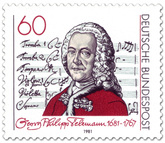 It’s not surprising that Telemann was so prolific. Born in 1681, he lived until he was 86, dying in 1767. The Oxford Music dictionary observes that “He remained at the forefront of musical innovation throughout his career, and was an important link between the late Baroque and early Classical styles. He also contributed significantly to Germany’s concert life and the fields of music publishing, music education and theory.” He composed over 1000 works, of which at least 125 were concertos. Many of these were “tafelmusik”, smaller scale pieces designed for domestic music-making. I would have like to know more about when and why Telemann composed this work. I have been unable to find information specific to the concerto we played, but it appears to have been composed around 1720 - 30. Have a listen - (I've removed the clapping between movements, and normalised the recording in audacity).
Concerto Grosso in E minor for Two Flutes and Bassoon - Stevenson College String Group:
In a completely different genre, some utterly simple tunes like Highland Mary are so beautiful in themselves that they transcend everything else. Our arrangement, which weaves instrumental interludes around the solo voice, never failed to create a shiver down my spine - so lovely.
Highland Mary - Stevenson College Trad Band:
While I’m looking forward to enjoying the Easter holidays, I have already started having nightmares about my recital and there’s so much work to be done for theory! Onward... and onward.
In the past few weeks, I have played accompanied solos twice in the Thursday afternoon performance session - once on the silver flute and once on the concertina.
In February, I played two of the Canadian waltzes that I have been working on since December: La Have River and Valse Frontenac (both recorded by Chris Norman).
The La Have River waltz, in particular, has been a big challenge to bring to performance level, on all sorts of levels. The tuning of the third octave high notes on my 19C wooden Rudall and Rose flute was unacceptable to me, and while changing the fingering improved things to some degree, the alternate fingerings made it difficult to express the waltzes the way I wanted to. In desperation, I tried to play them on the silver flute Boehm which hugely improved the tuning but created embouchure and fingering problems, as I only started playing the silver flute last November. I realized I needed a teacher, and am now having Boehm flute lessons, focussing on breath support and fingering agility, and I feel much more in control which is a great feeling when I’m performing on my own.
I put off performing the two waltzes until I felt that they were ready. I think the performance went really well; there was good feedback, and just as importantly, I felt that I played them the way I wanted them to sound (in my head).
I do suffer from performance nerves along with an exaggerated “awareness of impending doom” for several days before a planned solo performance. The feedback on the day was that it wasn’t obvious. Because I was confident that I had put the work in, I was able to recognize my nerves while playing, focus on breathing and breathe them away. I’ve never before been able to overcome my nerves while actually playing, so that was a great experience.
Today, I played an unknown tune, gan ainm*, in the performance class. It was a last-minute decision, as we were still fine-tuning the harmony and my transcription when we rehearsed it yesterday, and I’d only come up with the variations over the weekend. Although there were a couple of note blips, overall I feel satisfied that I expressed what I am trying to with the piece. The feedback was positive. It’s funny how the concertina is a bit of a novelty instrument with a unique sound.
I hadn’t really had time to be nervous, especially since I’ve been focussed on this week’s assessments. I did start to feel nervous early on, but I just reminded myself to breathe, and then I was too busy concentrating on playing to pay attention to the nerves. Maybe for me that’s the trick - to be well-prepared, confident in my ability to play the notes and with a well-formed understanding of what I’m trying express - and then, deal with my nerves by “just” breathing.
In general, I really like performing in public - and I hardly feel nervous about playing within a band. But as a solo musician, I worry about how the audience will receive the music, whether they’ll like it, whether they’ll like me, whether they’ll be interested in the genre of music... blah blah blah. That’s what causes my nerves...
I think I need to learn to put all of these worries aside - and just breathe.
*I heard this beautiful, pensive, four-part tune on an online repeat of the Traveling Folk radio programme, and there was no list of the the tunes included in the programme. If you know the name or composer of this beautiful tune, please get in touch and let me know!
We’ve been discussing marketing and “self-promotion” in college this week. We’ve had lengthy discussions about music careers, the different job strands, from the typical (teaching and performing) through the unexpected (transcriber, score librarian or lyricist).
I recently received a letter, officially informing me that my retirement age has been delayed to 62. I must be among the first to be affected. I’m nearly at the end of my working life, and I can see that I’m never going to make a living from my music. I’ve had good careers, good jobs, good opportunities. I started working when there was nearly full-employment and a plethora of opportunities. It’s much harder for young people today in the current financial recession - there are fewer opportunities and fewer full-time jobs. Personally, I think it’s more important for the few jobs there are to go to younger people - it’s their time.
There is still room for self-promotion though!
I’ve done some instrumental teaching in the past - on a voluntary basis. More supporting really - I taught trad tunes to an Argentinian AFS student during her stay in Scotland. I’ve had the odd request to teach adults. While I worked for years teaching IT to adults, I don’t feel qualified to teach music professionally. It’s such a responsibility - you hold a person’s musical journey in your hands. Great teachers nurture great musicians, bad teachers groove poor technique, indifferent teachers at best miss opportunities to be better. I think I’ll leave instrumental teaching to the great, and so won’t need to worry about reapplying for disclosure clearance, newspaper adverts or repolishing my CV.
Similarly, while I play in bands that do community gigs, I don’t see myself working as a gigging musician. On a sliding scale I may be closer to the top than the bottom in musicianship, but there few opportunities to make serious money performing. Nevertheless, I do have aspirations. I’d love to play in an Edinburgh orchestra. I’d love to play in, or even create, a baroque ensemble. I’ll look for more opportunities to perform trad music such as Shindiggery, the Beach Band and a great informal group I play with, Baguettes. I may still need to audition, I may still need to rework my CV, but I won’t need to worry about creating publicity materials, sending out press releases, putting together a demo cd or creating a myspace page.
One of the most unexpected things about my music course has been creating and maintaining my website and my public blog, the ultimate in self-promotion! It’s been hugely satisfying to have a vehicle that reflects my “public face”. I love the fact that people I don’t know read my blog, and that I’ve had “conversations” about music with people I do know but don’t see on a regular basis. (If you’re the reader from google.se and you’re still reading, know that you are appreciated, as are all the rest of you.) So that’s where my self-promotion efforts are going to go. I may redesign my business cards and add the website address to them. I may add my web address to the flute and concertina forums I participate in, and I may go out busking and post my web address on my music case.
I am going to keep blogging, and listening to loads of varied music. I am going to keep on playing, developing my technique, my expression and my musical “voice”. I understand now that the sort of music I play may change over time. That’s a good thing, because there‘s so much to learn and so many things to experience.
Music is such a journey. I’m just happy to still be walking on that road.
PS If you're looking for a session musician - flute or concertina, or you've got a vacancy in your orchestra or ensemble... please, get in touch!
The BBC has outdone itself recently with it’s classical musicology programming. Simon Russell Beale’s “Symphony” series was shown at the end of 2011, and Charles Hazlewood’s “Birth of British Music” , originally produced in 2009,is being shown again on BBC 4. This series looks at four 17C - 19C composers, Purcell, Handel, Haydn and Mendelssohn. Perhaps the irony of the German view of Britain as the “the land without music”* is not lost in the fact that in “The Birth of British”, only Purcell was actually British.
I only managed to catch the “Revolution and Rebirth” episode of Symphony, in which Beale looked at the symphonic works of Shostakovich, Ives and Copland. Wonderful music especially, for me, because all three composers incorporate their sense of culture and country into their music. I first heard Charles Ives’ Fourth of July (from the Holidays Symphony) when I was in secondary school, and I remember laughing out loud at the accuracy of the portrayal of one of America’s most “sacred” holidays. I listened to it again today, and while it starts darker than I remember, the later section still makes me laugh.
We were very fortunate, at Stevenson College in the early part of February, to have the opportunity to hear Tim Paxton (cello) and Simon Coverdale (piano) perform a Shostakovich cello sonata. In his introduction, Paxton referred to Shostakovich’s ability to be "everything for anyone", a technique that enabled him to surviving the totalitarian regime under which he spent his entire life. Much of his work was double-edged and ironic, embodying the requirement to be a good proletarian composer, his own struggle for identity and his alienation from the regime. The cello sonata was a very dark work, such despair, and though the mood lightened somewhat by the end, the music held no assurance that everything would be all right.
While the concept of the ”land without music” looks at the dearth of formal, classical composers in Britain, it also reveals a snobbish ignorance of the plethora of vernacular music throughout the British Isles.
Ordinary people have enjoyed vernacular music all over the world since time in memoriam. Scotland, Ireland, England and the Nordic countries, in particular, have rich folk musical traditions which have been woven into the music of formal composers such as Handel, Vaughan Williams, Sibelius and Grieg. Others, such as Mahler and Shostakovich, have written big, gorgeous works incorporating folk melodies at the heart of the music. Even in young countries like Canada and the United States, the melodies of the developing communities have been captured by such as Charles Ives and Aaron Copeland.
In all things, labels can be used either to gather together, or to separate. It’s not uncommon today to hear classical musicians say, “I’m not a folkie”, with the implication that folk music is something too informal or too primitive to have value. Folk music is about melody - usually simple but extraordinarily beautiful melodies. Those folk melodies have found their way into bigger, more complex music - and where would that music be without them?
* "Das Land ohne Musik" - “The earliest source yet given for this rather persistent German generalisation – for the French, I believe, have never concerned themselves much with English musicality at all – is Carl Engel's book of 1866, which Oskar Adolf Hermann Schmitz in his Das Land ohne Musik : Englische Gesellschaftsprobleme quotes as a reference. In fact the prejudice held by the Germans in this respect must be adjudged of rather earlier origin than even that.” http://www.musicweb-international.com/dasland.htm
Another year, a few more grey hairs and the opportunity to ponder good intentions, and sort out bad decisions.
I guess my main goal for the year is to survive the Degree Foundation Music course I’m on, and hopefully do well!?! I kind of leaped at the opportunity to do this music course, and with hindsight, I think I thought it would be a walk in the park. We’d arrive on the first day, unpack instruments, and spend 10 months playing tunes and generally having a chilled time. I could not have been more mistaken.
Unbeknownst to me, the course includes a rigorous theory component, and when I arrived my ignorance was very noticeable to me. With 3 weekly theory classes since September, music theory is being transformed before my eyes from something rather mysterious and scary into a surprisingly comforting numeric logic. I understand modes! I love scale spellings, and while I might not be able to get my fingers round all of them, I love the pattern of major, minor and “flat 5” 7 chords! Last September, I didn’t see any need for me to focus on Classical Music Theory, and negotiated an additional more advanced Pop Theory class instead. Since dabbling in classical music, and taking up the silver flute, I have come to regret that decision, and have now added an additional Classical Music Theory class to my capacious theory load. Theory is indeed a beautiful art in itself, let alone an essential means of translating musical intentions into reality.
Another goal for 2012 is to further develop my technique on all three instruments: wooden flute, english concertina and silver flute.
I’m currently playing three Canadian waltzes on the wooden flute, involving a lot of playing at the very top of the flute, a territory rarely ventured into by most traditional flute players. A lot of my focus right now is in improving my third octave sound. I’m finding that playing harmonics on both flutes and working my embouchure at the top of the silver flute’s range is helping, but it’s going to take time to make new habits.
I’m also working my way through Trevor Wye’s Practice Books 1 - 5 Omnibus, full of finger and mouth agility exercises. I’m thinking about the colour of tone, and whether all the notes in a scale can have the same colour. The exercises are strangely comforting to play, akin to the pleasures of learning theory.
Now that we’ve moved on to Country music as a style for improvising, I am turning my concertina focus onto playing chord accompaniment. I have always been primarily a melody player, although in the band I do play concertina chords for a couple of sets. While I find it relatively easy to learn tunes by ear, I find it more difficult to spontaneously play chords for tunes that I haven’t worked up, and that’s an area I hope to develop.
We’ve had several discussions, in class, on practice routines with the suggestion that we develop a fixed practice schedule. I find that a fixed anything quickly becomes something that I fail at and resent. Flexibility and focus on time-critical goals and weaker areas works better for me, evidenced by my progress. Every day I review (mentally and on paper) what I need to do. Then I prioritize the work against deadlines (blog deadline dates, composition deadlines, homework assignments, private lesson dates). It can be hard to find the time to practice three instruments every day, but I do try to play both flutes six days a week, and fit the concertina in at least a few times each week. I regularly record myself, listen back and then work until the recordings reflect what I’m trying to achieve.
As part of my course, I’m encouraged to develop networks, create new contacts, and market myself as a musician. If you’re reading this blog, you’ve already come across one of my self-promotional tactics! Playing in trad sessions is often a great way to make face-to-face contacts, while there are many online opportunities to promote oneself, including Facebook, Twitter, chiffandfipple.com flute forum, concertina.net and linkedin.com . I’ve also included my website on stumbleupon.com , which randomly generates website suggestions to members based on membership preferences. It must all be working, as in the past few months the hits on my website have increased, I’ve had an email from a new concertina player looking for information and another beginner looking for a lesson, I’ve received information about the Scottish Flute Summer School from a new contact, and I’ve had a request to play at a gig next year.
So how will I address these good intentions and goals? Through hard work, continual self-assessment and heaps of practice. Lots of sweat, a few tears but hopefully not much bleeding, except from my ego.
Onward and upward in 2012.
PS You may remember me mentioning Antje Duvekot’s Kickstarter project, in a previous blog? The cd, New Siberia, arrived in the post last week, and it’s a cracker! She emailed me to thank me for the mention in my blog. The internet is the biggest connection for us all...
|




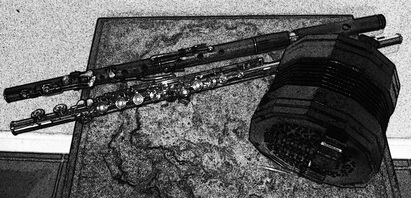
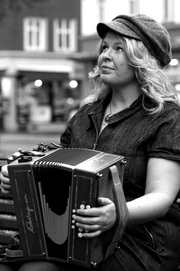

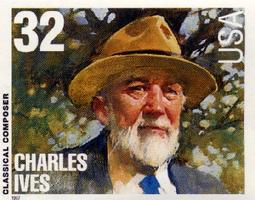
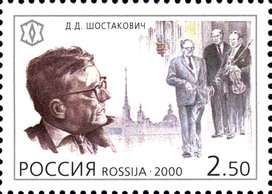
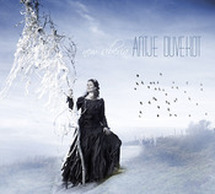
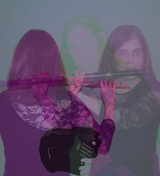
 RSS Feed
RSS Feed